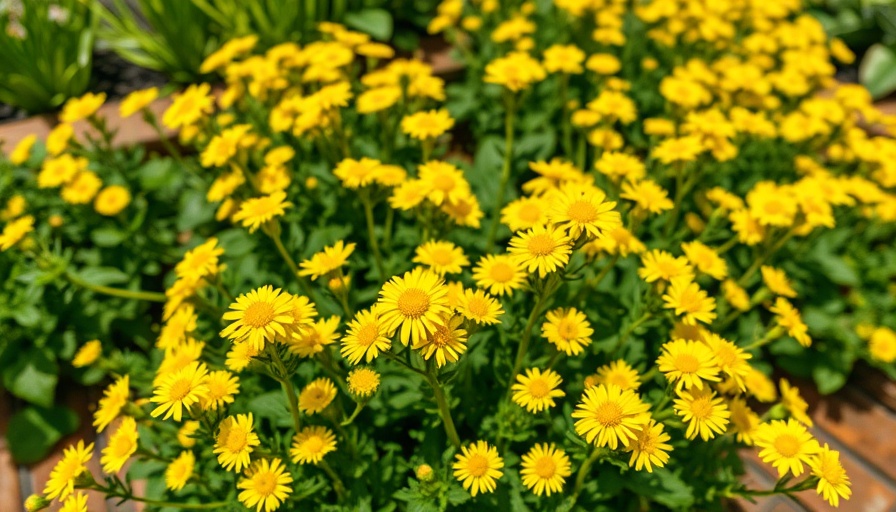
The Rich History of Dyer's Woad
Dyer's woad, scientifically known as Isatis tinctoria, has been intertwined with human culture for centuries due to its unique ability to produce a vibrant blue dye. Originating from regions in central Asia and Siberia, this plant has found its way into various agricultural practices globally. It was a staple for artists and fabric dyers long before synthetic dyes became commonplace. Ancient cultures recognized the exceptional properties of woad, turning it into the go-to dye for textiles and even body art.
Unique Characteristics of Dyer's Woad
Woad typically grows between one to three feet tall and boasts a basal rosette of bluish-green, hairy leaves. In spring and summer, clusters of tiny yellow flowers emerge, adding a pop of color to gardens. Despite its beauty, woad's capacity to thrive in various environments also leads to its classification as an invasive species in several areas of North America. While it can be cultivated carefully in home gardens, gardeners must be conscious of its tendency to spread.
Growing Conditions and Best Practices
To successfully cultivate dyer's woad, ensure you provide well-draining soil, direct sunlight, and adequate space to avoid overcrowding, which can lead to pests and diseases. Ideally, this plant flourishes in regions with around sixteen inches of rain annually, with temperatures above nine degrees Fahrenheit. The USDA Hardiness Zones for dyer's woad range between zones 4 and 8, making it suitable for various climates.
Maintenance Tips for a Flourishing Garden
Regular maintenance is essential for growing woad, especially if you want to harness its dye capabilities. Keeping a check on moisture levels is vital, as woad prefers not to be waterlogged. Wild plants may thrive in disturbed areas, but those in gardens require a little more care. Implementing a straightforward watering schedule and an organic mulch layer can help maintain soil moisture and suppress weeds, creating an ideal environment for growth.
Common Pests and Diseases
While woad is generally hardy, it can still attract common garden pests like aphids and caterpillars. Monitoring for signs of infestation early will help mitigate any potential damage. If diseases such as root rot become a concern, improving drainage and avoiding overwatering can be effective preventive measures. Use organic pest control methods, such as introducing beneficial insects or applying neem oil, to ensure a healthy growth experience.
Making Woad Part of Your Landscape
Dyer’s woad can serve as a unique addition to flower gardens, herb gardens, and landscaping projects. Its striking foliage and historical significance make it a wonderful talking point in any garden or landscape design, particularly those focused on pollinator-friendly plants. Consider incorporating woad into borders or companion planting schemes with herbs and flowers that thrive under similar conditions, maximizing garden plant diversity.
Conclusion: Embrace Woad for a Sustainable Future
As gardening enthusiasts look towards sustainable practices, incorporating plants like dyer's woad can lead to a more organic and fulfilling gardening experience. Whether you’re drawn by its historical significance or its potential for dye production, woad offers a unique perspective on how we can utilize nature's resources thoughtfully. Start embracing this remarkable plant by integrating it into your home garden, and enjoy the multiple benefits it offers. Remember, as you cultivate woad, to keep an eye on its growth habits to maintain its place in your garden sustainably!
 Add Row
Add Row  Add
Add 




Write A Comment